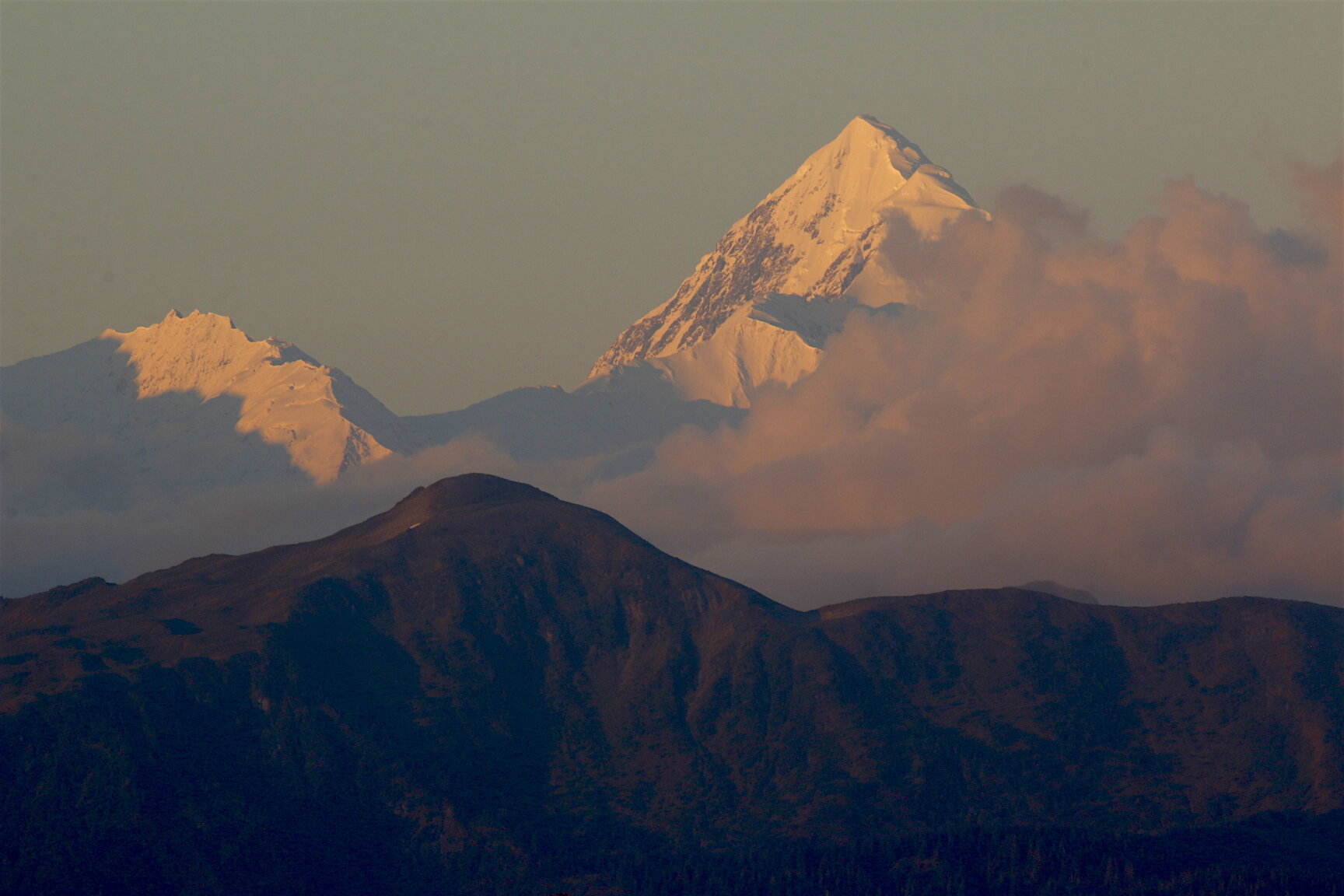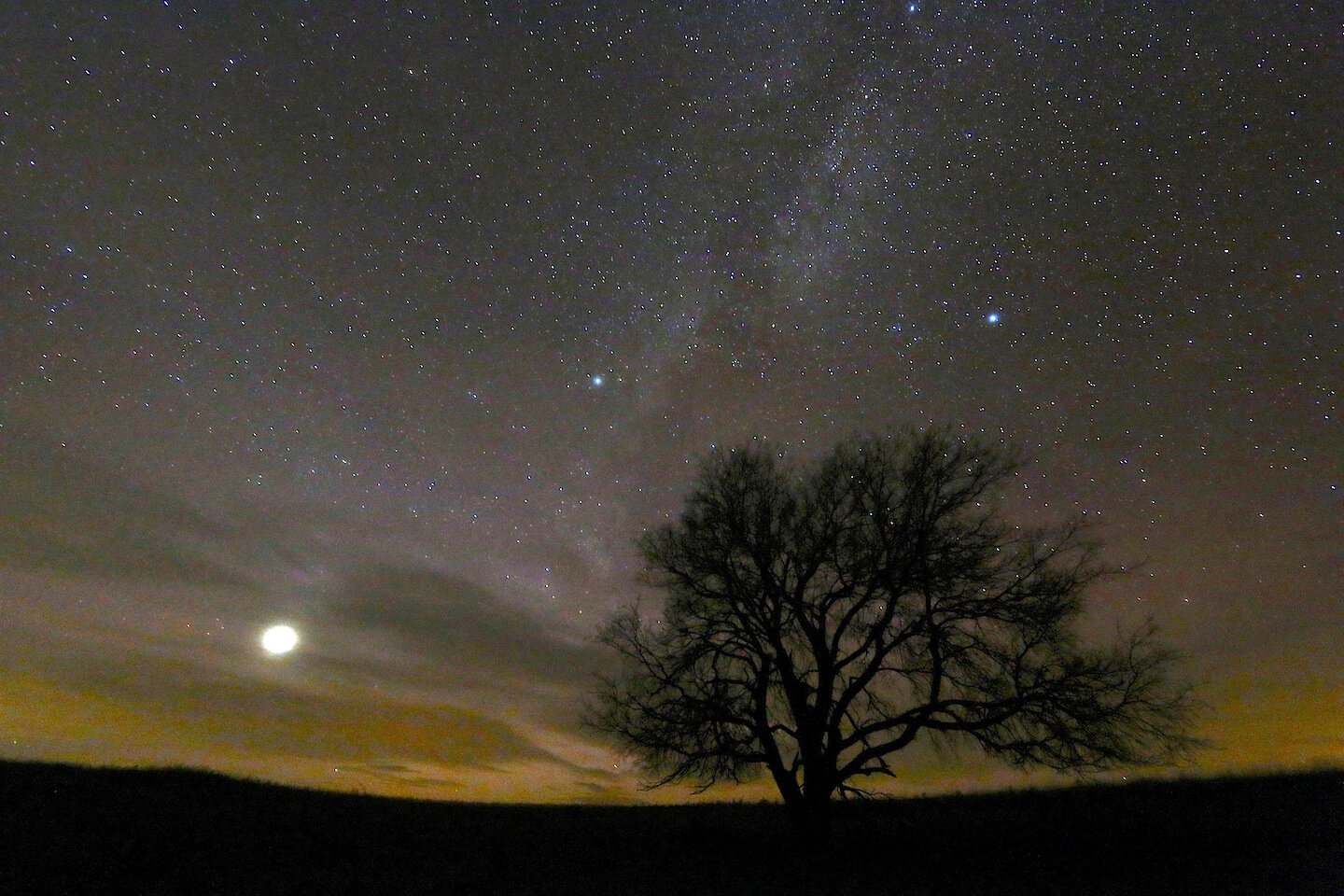How Altitude Changes Trajectory
An Eastern flatlander heading west for an elk hunt at 8,500 feet asked if altitude changes trajectory enough to worry about? And the answer is a clear no. Yes. Maybe. Well, it depends. Perhaps we should dig a little deeper…
Photo of snow capped mountain peaks above black, shadowy foothills illustrates how altitude changes trajectory.
How high were you planning to hunt?
Kind of a Drag
You might believe something invisible and as insubstantial as air would not bother a skinny, sleek, little projectile zipping downrange at 3,000 fps. But, just as air slows you down on your bicycle, it slows down bullets. In fact, the atmosphere — not gravity — is the biggest stumbling block to long range bullet performance. Gravity merely alters a bullet’s course. Air drag also alters its force. Atmospheric drag is what inspires us to endure more recoil in order to throw heavier bullets at faster speeds to offset the inevitable loss of velocity and energy downrange.
Photo of a tree silhouetted against a starry sky illustrates how we are on a planet with gravity and atmosphere, which means altitude changes trajectory of bullets.
Gravity is a constant, but atmosphere is not. The higher we get above the center of the Earth, the thinner the air becomes.
To appreciate the gravity of this situation (couldn’t resist,) remember that gravity on Earth pulls at 32 feet per second PER SECOND. This means the pulled object is accelerated in the direction of the gravitational pull. Consistently. Constantly. If you fired a projectile 3,000 fps on the moon (no atmosphere) from 32 feet above a pool-table-flat field and parallel to it, said projectile would impact 3,000 feet downrange after about a second of flight time. “About” a second because it takes some fractions of a second to accelerate on its downward vector. But all the while, because there is no atmosphere to slow it down, it’s still racing along on its downrange vector at its initial muzzle velocity of 3,000 fps. If it were carrying 3,358 foot-pounds of energy at the muzzle, it would still be hauling 3,358 f-p of energy 3,000 feet downrange.
That’s efficiency.
Atmosphere at Altitude Changes Trajectory
But we don’t hunt on the moon. We hunt on a planet with atmosphere. Nitrogen, oxygen, argon and carbon dioxide. Trillions upon trillions of tiny molecules get in the way and suck the energy out of our bullets. But even this wouldn’t be too hard to deal with if it were consistent. It’s not.
Image of full moon illustrates how any location without atmosphere doesn't drag a moving projectile. Thus altitude changes trajectory not at all on the moon.
Alas, we don't hunt on a globe with no atmosphere, so we have to deal with the drag effects of Earth's air molecules.
Atmospheric density changes with altitude or elevation. The farther air molecules get from the Earth’s surface, the weaker the gravitational pull on them and the greater the spaces between them. With increasing altitude, air density decreases, thus drag decreases. This is why jets fly at 35,000 feet instead of 3,500 feet. Saves gas. (Technically, one is at "elevation" when on the surface. Altitude refers to the distance an object is above the surface whether that is the sea or a mountain peak. Most of us use the terms interchangeably, but in this article we mean distance above sea level when whether we use "altitude" or "elevation.")
To appreciate how much altitude changes trajectory, let’s run a couple of ballistic tables comparing the same 168-grain Nosler AccuBond Long Range .284 bullet fired 3,000 fps (7mm Rem. Mag. performance) at 1,000 feet and at 8,000 feet.
1,000 Feet Altitude
8,000 Feet Altitude
Study the elevation columns (bullet drop, 2nd from left) and you realize that the 1.77-inch difference at 500 yards isn’t enough to worry about. Ditto the wind deflection (5th column from left) difference of about 3 inches. The remaining kinetic energy difference (2nd column from right) of 268 f-p might look significant, but that’s about twice the punch of a 22 Long Rifle. No big deal.
But do notice the drop, drift and energy differences at 1,000 yards. More than a 2-foot change in drop and 16-inch change in deflection are major. This is another example of why extreme range shooting is so challenging. It’s more about measuring environmental conditions and computing numbers than shooting.
Temperature Changes Trajectory, Too
But even this isn’t consistent because we’ve ignored temperature changes. Temperature always changes air density. Warm air is less dense than cool. A bullet that strikes point of aim at 300 yards on a 90-degree F. day will miss low on a -30-degree F. day. It burns more energy pushing that denser, colder air.
Photo of a hunter with a Dall's ram in a high, rocky basin with snowcapped peaks in background suggests altitude changes trajectory.
Should a Dall's sheep hunter above tree line in the Alaska Range worry about how altitude changes trajectory? No, because tree line here is generally at an altitude below 4,000 feet. Many of what appear to be towering peaks top out at less than 6,000 feet. I shot this ram at about 5,000 feet above sea level, making no compensation for altitude changes to trajectory.
Temperature also changes with altitude. In general, temperatures at higher altitudes are lower than at lower altitudes. On average it drops 3.5 degrees F. for every 1,000 feet you go up. Our 40-degree temp at 1,000 feet would fall to about 15.5 degrees at 8,000 feet. So while drag decreases because air is thinner near snowcapped mountain tops, colder air on snowcapped mountain tops increases air density, offsetting some of the altitude density effects. Temperature, then, works to ameliorate air density changes at altitude.
Whew! Who'd have imagined a little change in altitude could introduce such complexities? But how much difference will this make at 8,000 feet? Let’s build a trajectory table using the same load as above, but factor in the probable temperature difference at 8,000 feet.
8,000-Foot Trajectory at 15.5-Degrees
Notice how the lower temperature increased air density which nudged our drop and drift numbers closer to the 1,000-foot altitude trajectory numbers. A 1.4-inch difference in drop at 500 yards? Ignore it and shoot your deer. A 2.6-inch wind deflection difference? Again, on a broadside deer's chest, not a significant problem. And, as usual, don't fret about any changes in energy. My goodness, a bullet moving 2,434 fps and carrying 2,211 f-p energy can terminate anything living on this planet. Or the moon, should we ever find anything there. (On second thought, any primitive life forms on the moon are likely to be bacteria unlikely to be phased by a direct hit from a bullet.)
Final Answer to Altitude Changes Trajectory Questions
Yes, altitude does change bullet trajectory. But not enough to screw up a game shot inside of reasonable distances. This doesn’t mean you should ignore altitude. If you zero near sea level and hunt near 14,000 feet, you’d be wise to run some ballistic tables and study them before the hunt. And always, always re-zero your rifle at any new hunting destination. Even if temperature and altitude haven’t altered your zero, travel knocks or humidity shifts in your stock could have.
With air density worries laid to rest, you're free to worry about what happens during steeply angled shooting. That downhill and uphill problem, which is covered in this earlier blog. Read 'em and weep, pilgrim! Long range shooting at higher elevations isn't for wimps.
The author used to fret and worry over all the complicating factors that change bullet trajectories. Then he realized that keeping shots under 300 yards or so circumvented nearly all of them while adding the challenge and thrill of stalking closer.




















